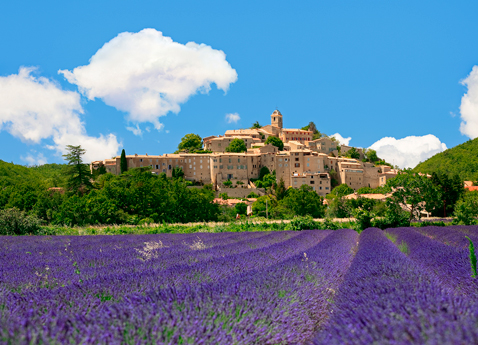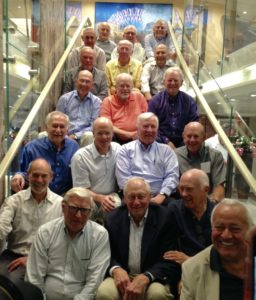Rhone River Cruise


Last year Steve received an invitation to join section mates of his Harvard Business School (HBS) Class of 1968 for a cruise on the Rhone River. One of those mates is Tor Hagen, Chairman of Viking River Cruises and he made his friends an attractive offer. Perhaps you’ve seen Viking ads on Masterpiece Theater. The reality exceeded our very high expectations. Our trip from Avignon to Lyon, September 21-28, was on a exquisitely-designed boat. It had to have a shallow draft, fit under low bridges, pass through narrow river locks, and still be luxurious; it succeeded completely. Every day we had great food, fascinating shore excursions, interesting conversations, and perfect weather. Tor told us that Viking River cruises are distinguished by what they do not have: no smoking, no casinos, no assigned seatings for dinner. What we experienced was 49 staff members lavishing attention on 180 guests. Full disclosure: the lavender shown above was not in bloom in September, but we caught the scent often, had it in sauces, and bought sachets as souvenirs. Lavender will now remind me of the generosity of Tor Hagen and the excellence of Viking River Cruises.

Nineteen men of the 80+ in Steve’s section came on the trip, 34 of us in all. (There were a few women in the HBS class of 900 in 1966, but none in Section D.) There would have been twenty men on the cruise, but Martin Sorrell and his wife had just had a baby. Steve and I were one of only three couples who came on the tour, who were already married when they came to Harvard in 1966 and still are. I was glad to see Mary McKane and Ida Bell from the now-defunct HBS Wives Club. Participants from London and many US cities were all lively conversationalists. A leisurely week provided many opportunities to get better acquainted than we had during brief encounters at HBS reunions. Here are old friends and new that we will remember fondly.
Daily excursions illuminated the history of the region, with the Viking Daily providing helpful background, such as these excerpts about the Rhône River.
The name “Rhône” is from the Celtic Rodo or Roto, meaning “something that rolls.” The 505-mile-long river starts its journey as a glacier in the Swiss Alps. Before coursing its way into the French Alpilles, it flows through Lake Geneva, then, south of Lyon, the river cuts through the Rhône Valley, which shares its climate with the Mediterranean.
Since Roman times, the Rhône has been a major trade route, connecting the Romans to the northern Celts, who offered tin and amber for salt from the south. As one of only three major European rivers to empty into the Mediterranean (Italy’s Po and Spain’s Ebro are the others), the Rhône has been a vital link to Northern Europe for traders and armies.
Most of the major vineyards along the Rhône date back to the ancient Romans, who planted vines as they expanded northward. When the papacy was relocated to Avignon in the 14th century, the wine-loving popes encouraged locals to promote their wines beyond their small riverside communities, creating what was perhaps the first viniculture marketing strategy.
Until the 19th century, travelers journeyed on the Rhône in “coches d’eau,” or water coaches, pulled by men, mules or horses walking along the river on a towpath. In the 19th century, barges transported goods downriver. Once emptied, they were hauled back upriver; up to seven were tied together in a train pulled by as many as 80 horses. Paddle steamboat service ran from the 1830s to the mid-20th century. In the early 20th century, lock systems were installed to aid river travel and irrigation and to produce hydroelectric power. Today, due to an impressive series of locks and canals, it is a sedate and tranquil waterway.
Look for more posts about the excursions we took each day (such as Arles and Les Baux) and our amazing dinner at Paul Bocuse’s 3-star restaurant in Lyon.
Leave a Reply